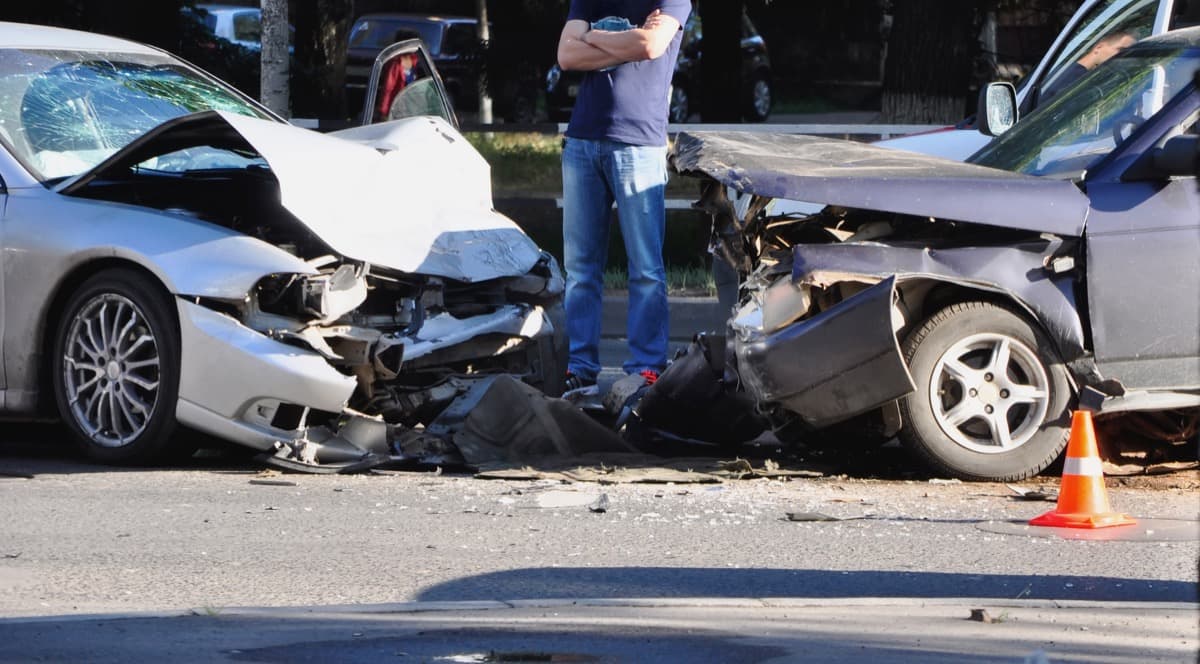You’re in the kitchen when suddenly you hear a loud crash from the family room where the kids are playing. You rush in to see your favorite vase smashed into pieces on the floor. Without even asking any questions, chances are the kids will each point at one another and say “S/he did it!!”.
If you’re in a car accident, something similar might happen. The other driver may blame you and you may blame them. But, at the end of the day, how is fault actually determined when a car accident occurs?
It’s an important question to understand because who is at fault will often have some big implications… and not good ones for the guilty party. There may be legal repercussions. Insurance rates may go up. And other financial hardships may be on the horizon.
In this article, we’re going to look at how fault is determined in an accident and how that determination affects those involved.
How fault is determined
In most cases, it’s up the insurance companies involved to figure out who was at fault in an accident. The person from the insurance company who does this is called the claim adjuster.
The claims adjuster and their team will open an investigation and look at all available evidence. This may include reviewing statements taken from witnesses, drivers and passengers, the police reports, medical records, researching the traffic rules and road signs in the area of the accident as well as reviewing photos of the accident scene.
Once the adjuster compiles all that information, they’ll try to determine the cause of the accident. And, after analyzing all the data, they’ll make a determination of who the guilty party is. Or, at least the person who they feel is most at-fault for the crash. For example, they may determine one driver was 80% at-fault and the other one just 20% at-fault.
This is not an exact science (especially when you’re trying to figure out the percentages that each part is at-fault). And it’s largely done with anecdotal evidence. This is why it’s usually in your best interest to hire a really good car accident attorney who will go to bat for you and try to get as favourable a ruling for you as possible.
What it is like to live in a no-fault state
There are a handful of states that have what’s known as a no-fault insurance policy. In these states, who’s at fault in the accident doesn’t matter as much. Because with these policies, your insurance company will pay for injuries and the other driver’s insurance company will pay for that person’s injuries.
This is only to a point, though. If your injuries cost more than the coverage you have, the at-fault party’s insurance company may be on the hook for those additional costs. Also, any property damage is fault-based so will be paid by the at-fault party’s insurance company.
States rules on these things vary so check out the rules for your state and your insurance policy to see how this may affect your situation.
How fault can affect insurance
There are three types of negligence (just a fancier word for fault) which determine the degree (ie. percentage) of your fault in an accident. This in effect, determines your claim.
- Pure Contributory: This is where a driver can only recoup damage costs if there were found to be 0% at fault in an accident. If you’re found even 1% at fault, sorry Charlie! This is pretty extreme and, fortunately, only a handful of states (and Washington DC) use this.
- Pure Comparative: This is where the amount of damage costs you can recoup is in proportion to what percentage of the accident is deemed to be your fault.
Let’s say you’re found to be 20% at fault for the accident and there was $1000 in damage. Then you’d be able to file a claim for $800 of the damage. - Modified Pure Comparative: This is the most commonly used system. It basically is where the person responsible for either 50% or 51% of the accident (depending on the state) is not entitled to get any money for damages. However, if the other person was responsible for 70% and you’re responsible for 30%, then you can recoup 70% of the damage costs from the other driver.
The Bottom Line
Rules vary by state but it’s critical for you to understand how this all works if you’re in an accident. Because being able to defend yourself and limit how at-fault you are determined to be for an accident can mean $100s or $1000s of dollars.
And that’s why, as mentioned above, it makes a lot of sense to hire a good car accident attorney who can advocate for you against insurance companies and/or in a court of law.








